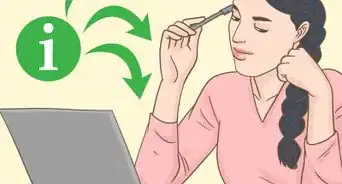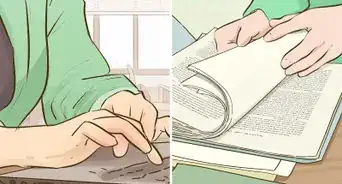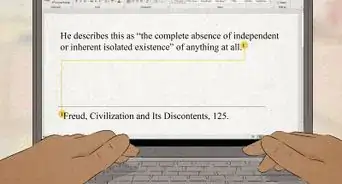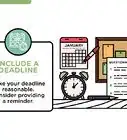X
wikiHow is a “wiki,” similar to Wikipedia, which means that many of our articles are co-written by multiple authors. To create this article, volunteer authors worked to edit and improve it over time.
This article has been viewed 25,540 times.
Learn more...
When writing an academic paper, your professor or school will require you to follow a particular style guide. Each style guide has rules that are a little bit different from each other, such as how to format your paper. The tips below will help you when formatting your paper for the American Psychological Association (APA) style, which is used mostly in the sciences.
Steps
Method 1
Method 1 of 2:
Dividing the Paper
-
1First, create a title page. It should have your paper title, your name, and your organization or school. It should also have the page header. The title shouldn’t be longer than 12 words. This section should be double-spaced like the rest of the paper.
-
2Next, write an abstract for your paper. The abstract should be on a new page with the centered word “Abstract,” and it should have the page header.
- An abstract is a summary of your paper, including the key ideas and conclusions. It should be about 200 words, give or take 50 words.
- You can list keywords after the abstract if you wish in a new paragraph that begins with “Keywords:”
Advertisement -
3In the next section, place the main body of your paper. In the main body, the headings should be formatted in 5 levels.
- Level 1 headings should be for the main title. They should be centered, bolded, and in title-case capitalization, meaning you capitalize the first and last word and other important words, like this:
- Coffee Mugs and Other Knickknacks
-
4Divide your paper into major sections using level 2 headings. They should be bolded, in title-case capitalization, but aligned to the left:
- Coffee Mug Collections
-
5Include your level 3 headings. For level 3 headings, use bold type, aligned to the left with an indention, and sentence-case capitalization.
- Sentence-case capitalization is where you only capitalize the first word. Use a period at the end, and begin the text immediately afterwards:
- Coffee mugs with sayings. Many coffee mugs include sayings on the side…
-
6Format your level 4 headings. With level 4 headings, use bolded type, an indention that's aligned to the left, and a period at the end.
- You also begin the text immediately, use sentence-case capitalization and italicize the text:
- Types of Coffee Mug Sayings. Coffee mug sayings fall into several categories…
-
7Finally, include your level 5 headings. For level 5 headings, use an indention that's aligned to the left, and use sentence-case capitalization and italicized text. Put a period at the end and include the text afterwards:
- Funny Coffee Mug Sayings. Some of the best sayings are hilarious ones…
-
8Write your reference page. The last part of your paper is the reference page. On the reference page, use hanging indention, which is where the first line is all the way to the left on each reference, but the subsequent lines are indented. Alphabetize the page by the author’s last name.
Advertisement
Method 2
Method 2 of 2:
Writing Citations
-
1Learn how to do a basic book citation. To create a basic book citation, follow this format: “Bard, S. (1999). Coffee and caffeine. Salt Lake City, UT: Buzzed Books.”
- In this citation, “Bard” is the author’s last name, and “S” is the first initial. “1999” is the date of publication. “Coffee and caffeine” is the title, using sentence-case capitalization, meaning only the first word is capitalized.
- Finally, “Salt Lake City, UT” is the place of publication, and “Buzzed Books” is the publisher.
-
2Turn the book citation into an in-text citation. To use this for an in-text citation, add a parenthesis at the end of the sentence you want to cite with the author’s late name, the publication date, and the page number you found the information on:
- “A standard cup of coffee has an average of 100 milligrams of caffeine (Bard, 1999, p. 24).”
-
3Know how to cite an essay in a book. For an essay in a book, follow this format: “Grace, G. (2002). Green tea. In Grey, H. (Ed.), Caffeine in beverages (55-89). Salt Lake City, UT: Buzzed Books.”
- In this instance, “Grace, G.” is the author of the essay, while “Grey, H.” is the editor of the anthology. “Green tea” is the title of the essay (no italics), and “Caffeine in beverages” is the title of the book. “55-89” is the page numbers of the essay in the book.
- Make an in-text citation with the author of the essay. For example “Green tea has less caffeine than coffee (Grace, 2002, p. 57).
-
4Understand how to cite journal articles. For a journal article, follow this format: “Smith, G. (2005). Green tea’s benefits. All about Tea, 23(4), 44-76. Retrieved from http://www.greenteadatabase.com.”
- In this case, “All about Tea” is the name of the journal, and 23(4) is the volume and issue number, while “44-76” is the page range.
- To make an in-text citation, use the same format: “Green tea is a calming beverage (Smith, 2005, p. 47).”
Advertisement
Community Q&A
-
QuestionHow do I cite references from internet sources?
 Serena SchweitzerCommunity AnswerPapers usually require citations on a reference page to give credit to authors. To cite a website source in APA format, first list the author's last name. Follow this with a comma and the author's first initial. Place a period after the initial and follow it by the year the source was published in parentheses. Next, place a period outside of the parentheses and list the title of the article. After listing the title of the article, place a period and list the website's name. Once you have listed the website's name, place a period and list the URL. After listing the URL, the citation is complete.
Serena SchweitzerCommunity AnswerPapers usually require citations on a reference page to give credit to authors. To cite a website source in APA format, first list the author's last name. Follow this with a comma and the author's first initial. Place a period after the initial and follow it by the year the source was published in parentheses. Next, place a period outside of the parentheses and list the title of the article. After listing the title of the article, place a period and list the website's name. Once you have listed the website's name, place a period and list the URL. After listing the URL, the citation is complete. -
QuestionAre a quote and citation considered the same?
 Community AnswerQuotes are the portions of a cited work that require citation to prevent plagiarism. The citation is a specific format used to give credit for that quote where it is due.
Community AnswerQuotes are the portions of a cited work that require citation to prevent plagiarism. The citation is a specific format used to give credit for that quote where it is due. -
QuestionDo you use the tab key as a preferred method to indent in academic papers?
 JcCommunity AnswerYes. The amount of space assigned to a tab key has been standardized over the year and most citation styles accept that standard. Unless it specifies otherwise, the tab key is an acceptable method to indent for academic papers.
JcCommunity AnswerYes. The amount of space assigned to a tab key has been standardized over the year and most citation styles accept that standard. Unless it specifies otherwise, the tab key is an acceptable method to indent for academic papers.
Advertisement
References
About This Article
Advertisement
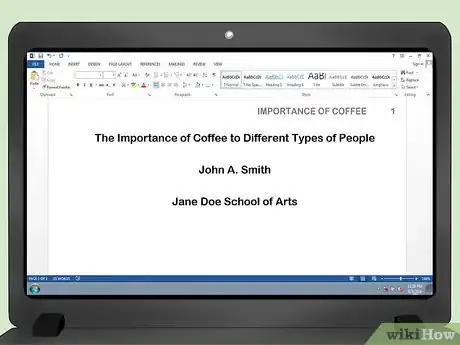
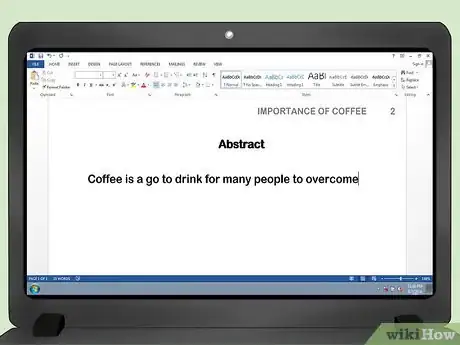
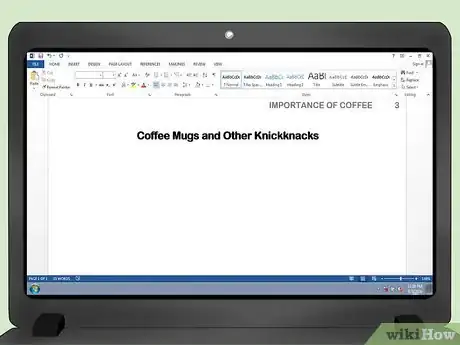
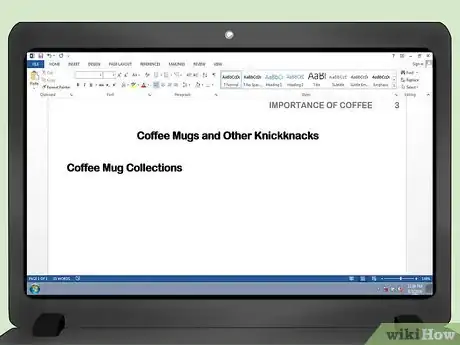
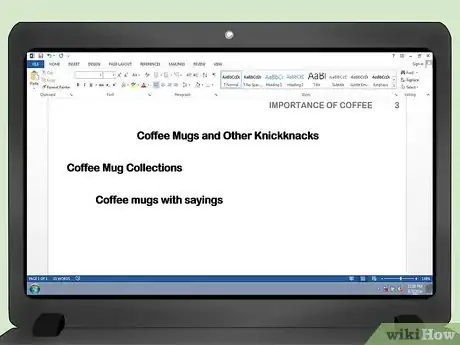
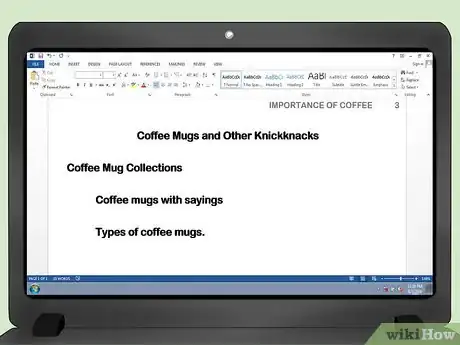
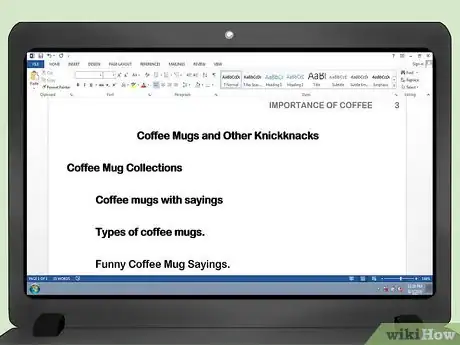
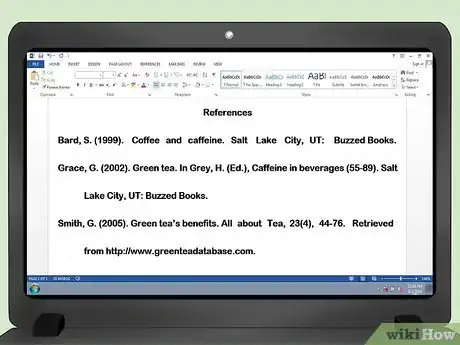
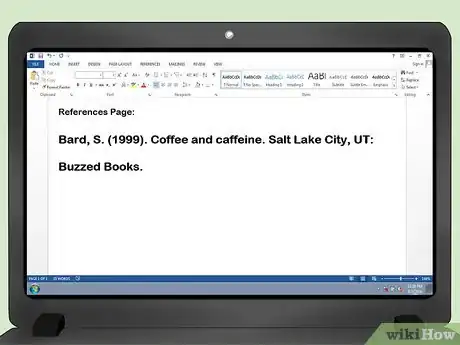

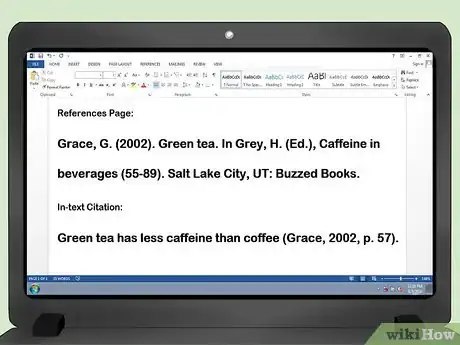
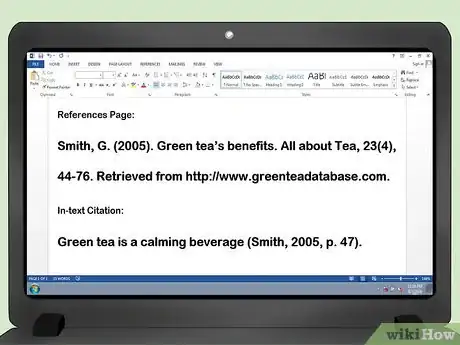




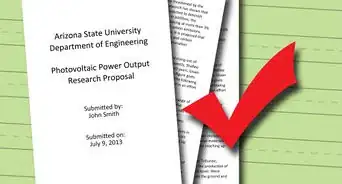
-Step-17.webp)


